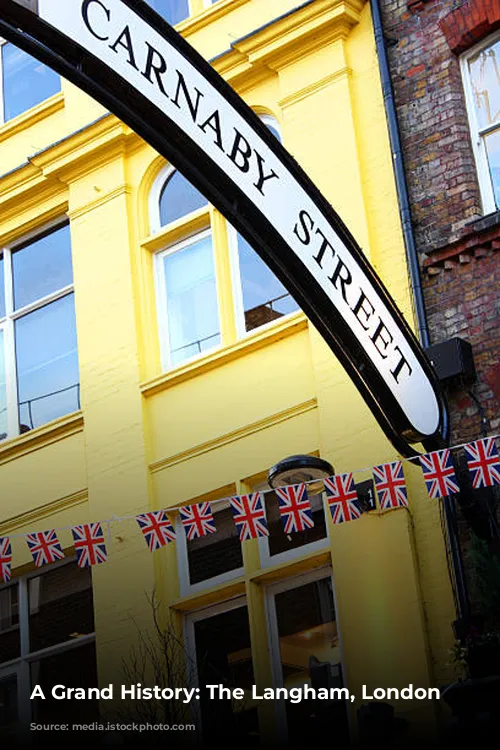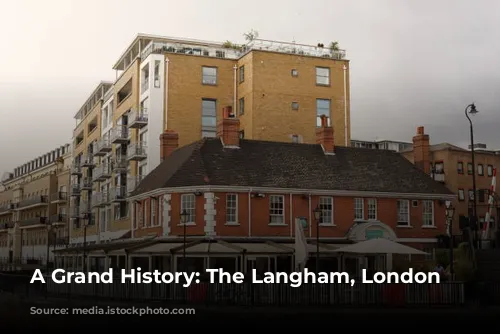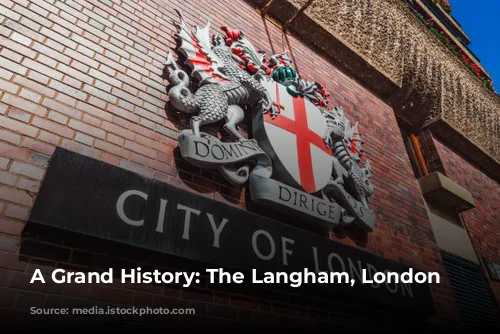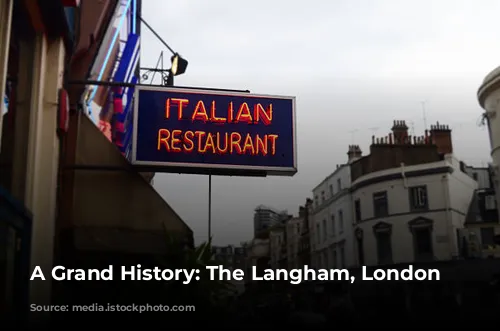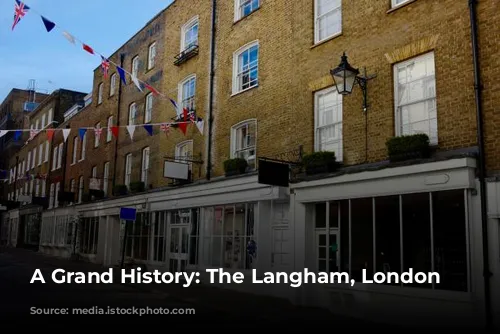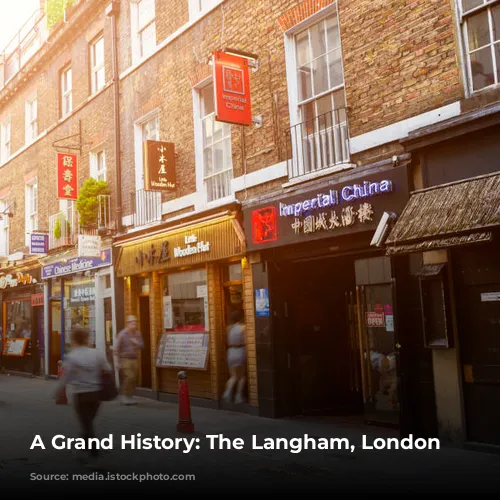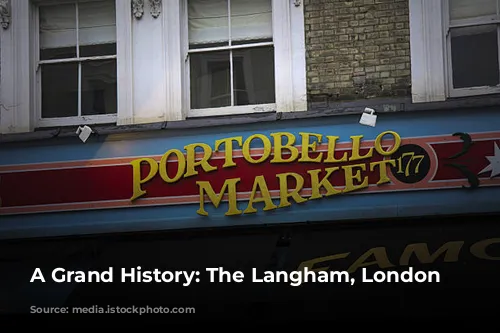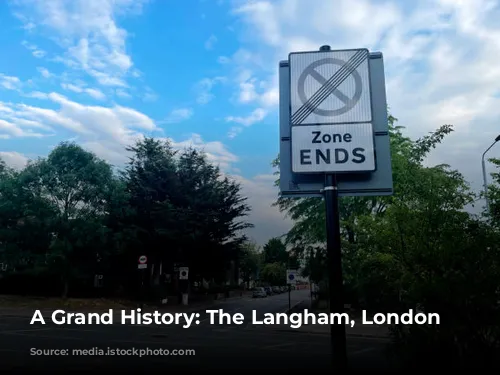The Langham, London, a five-star hotel in the heart of the city, boasts a rich history and a prominent place in the annals of British culture. Located in the fashionable Marylebone district, it stands majestically on Langham Place, facing towards the verdant expanse of Regent’s Park.
This architectural gem, designed by John Giles and constructed by the Lucas Brothers between 1863 and 1865, was a testament to Victorian grandeur. The £300,000 construction cost (equivalent to a whopping £36,230,425 in today’s money) resulted in the most advanced and spacious hotel in London. Imagine a hotel with a hundred water closets, thirty-six bathrooms, and even the first hydraulic lifts in the entire country! The grandeur of its opening in 1865 was marked by the presence of the Prince of Wales himself.
This grand hotel, a symbol of Victorian luxury, quickly attracted a diverse clientele. In 1867, James Sanderson, a former American Union Army officer, took the helm as the hotel’s general manager. His leadership ushered in an era of American influence, attracting notable figures like Mark Twain and the renowned financier, Hetty Green. The Langham became a melting pot of international allure, welcoming notables like Napoleon III, Oscar Wilde, and even the great composers Dvorák, Toscanini, and Sibelius. In 1879, the hotel embraced the future by installing electric lights in its entrance and courtyard, showcasing its commitment to modernity.
Arthur Conan Doyle, the creator of the iconic detective Sherlock Holmes, found inspiration within the Langham’s walls. Two of his famous stories, “A Scandal in Bohemia” and “The Sign of Four,” are partially set in the hotel, adding a layer of literary intrigue to its history.
A Royal Residence and Wartime Refuge
The Langham continued to enchant throughout the 20th century, drawing members of the royal family, politicians, and celebrities from around the world. Princess Diana, the epitome of grace, frequented its luxurious accommodations. Winston Churchill, a stalwart leader of the British nation, and Charles de Gaulle, a symbol of French resilience, were among its distinguished guests. Noël Coward, a celebrated playwright and actor, and Wallis Simpson, a figure of historical intrigue, also graced the Langham with their presence.
The hotel weathered the storms of the Great Depression and World War II. Despite attempts to sell the property during the economic downturn, the Langham remained a beacon of resilience. During World War II, the hotel became a temporary home for the British Army. It was not immune to the horrors of war, however, and was unfortunately damaged by enemy bombs, forcing a temporary closure.
From BBC Headquarters to Reimagined Luxury
After the war, the BBC took possession of the Langham, using it as supplementary housing for their Broadcasting House, and eventually purchasing it outright in 1965. This marked a significant chapter in the Langham’s history, as it became intertwined with the world of broadcasting. This period also saw a fascinating anecdote unfold – Guy Burgess, a member of the infamous Cambridge Five spy ring, resided at the Langham during his time with the BBC.
Despite the BBC’s occupation, the grandeur of the Langham remained, albeit transformed. The Palm Court, once a haven of social gatherings, became a reference library for the BBC, while the restaurant transformed into a staff bar and refreshment room.
In 1980, the BBC sought permission to demolish the Langham, replacing it with a modern office building. The public outcry against this proposal, however, led to the rejection of the plan, preserving the architectural legacy of the hotel.
The BBC, ultimately, sold the Langham to the Ladbroke Group in 1986, who embarked on a £100 million refurbishment, rebranding the hotel as the “Langham Hilton” and reopening it in 1991. The hotel then underwent a series of renovations in 1998 and 2000 under its new owner, Great Eagle Holdings, restoring it to its former glory.
A Modern Legacy: The Langham Today
Today, the Langham continues to be a jewel in the crown of London’s hospitality scene, welcoming guests with a blend of historic charm and modern luxury. With 380 rooms, a restored Palm Court serving its iconic afternoon tea, a business center, and 15 function rooms, including the Grand Ballroom, the Langham offers a quintessential London experience.
The Langham’s culinary scene is vibrant and diverse, boasting a range of dining options. The new Mimosa restaurant will replace The Landau in 2024, while The Wigmore, a British tavern by renowned chef Michel Roux Jr., resides next door. The Good Front Room, led by Dom Taylor, the winner of the Five Star Kitchen TV show, brings a touch of contemporary flair to the hotel.
Beyond its culinary offerings, the Langham continues to be a magnet for the arts. The hotel opened a cookery school called “Sauce by The Langham” in 2019, further showcasing its dedication to culinary excellence.
The Langham’s rich tapestry of history, woven with the threads of royal patronage, literary inspiration, wartime resilience, and modern transformation, continues to inspire awe and wonder. Its name is synonymous with grandeur, a symbol of London’s enduring charm and timeless elegance.
